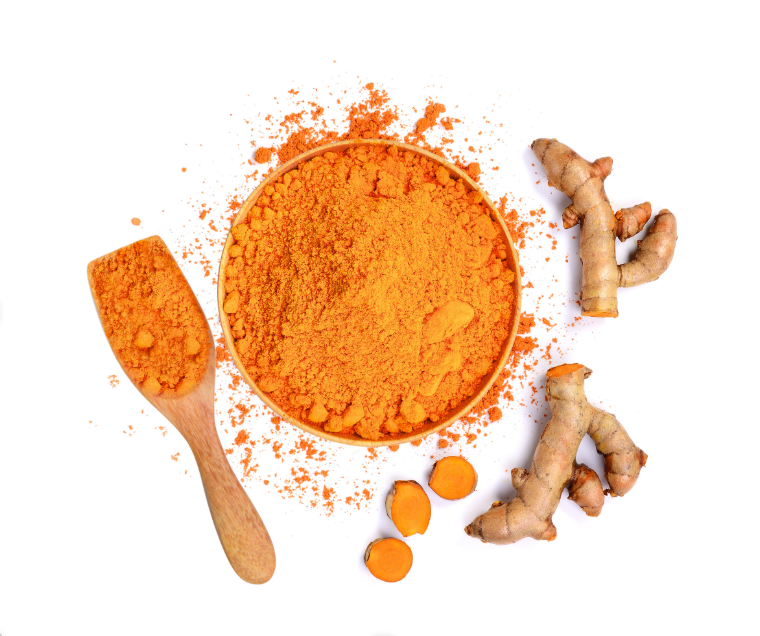Overview
Turmeric has been used as a traditional spice in Asia for thousands of years. Many people used it for medicinal purposes due to its potent anti-inflammatory and antioxidant properties.
Scientific research constantly reports the health benefits of using this extract.
More specifically, the positive effects of turmeric are attributed to curcumin. Curcumin is the primary active compound.
How Can Turmeric Help With Back Pain?
In a 2016 study, researchers analyzed the studies published about the analgesic (pain-reducing) effects of turmeric related to joint arthritis. They found that curcumin has potent anti-inflammatory properties. These anti-inflammatory properties can potentially reduce the pain for people with joint arthritis. These findings suggest there is scientific evidence to support “the efficacy of turmeric in the treatment of arthritis.”
Let’s look closer into the science behind using turmeric:
Reduced Inflammation
With some types of acute low back pain, you can find inflammation. Inflammation represents the body’s natural defense response.
Sometimes, the immune system causes pain by producing inflammatory substances like cytokines, prostaglandins, and leukotrienes.
The source of inflammation varies greatly from one patient to another. Potential causes of inflammation include muscle strain, or injuries to tendons/ligaments.
In addition to inflammation, the body often naturally tries to protect itself during episodes of back pain. If a movement is painful, your body’s natural response is to avoid it. This can lead to reduced mobility and decreased range of motion over time. Physical therapists can help to guide you through range of motion exercises to improve mobility. Contact us to learn more!

Reduced Oxidative Stress
Usually, the body keeps the balance between reactive oxygen species (a.k.a free radicals) and antioxidants inside the cell.
The reactive oxygen species’ (ROS) main purpose is to destroy foreign pathogens that try to disrupt the normal functioning of the cells. However, these compounds are not equipped with targeting abilities. As a result, they contribute to non-specific destruction of everything in their way.
For example, think of the ROS as a bulldozer. It destroys everything in it’s path (whether it was intended or not.)
In order to counter this effect, the cell recruits antioxidants. These antioxidants are both endogenously produced (produced by the body) and gathered through food.
Whenever this balance is disrupted and ROS surpass the antioxidants available, we reach a state referred to as “oxidative stress”.
What Does This Mean?
The medical literature is full of information about the destructive effects of this state and its implementation in numerous conditions. Conditions include coronary artery disease, diabetes mellitus, blood hypertension, and some types of cancer.
As a result, scientists are always on the look for natural substances with potent antioxidative properties (like turmeric.)
Throughout the years, turmeric was excessively researched for its antioxidative effects. It is a powerful antioxidant that is able to neutralize the free radicals inside the cell.
Moreover, turmeric has the ability to boost the function of other naturally-occurring antioxidant enzymes.
These health benefits of turmeric are great, however,…
It is important to note: we were not able to find much research on the relation between oxidative stress, turmeric, and back pain specifically.
Conclusion: Can Turmeric Help With Back Pain?
To sum things up, Turmeric is loaded with anti-inflammatory substances and antioxidants that studies have shown can be good for your health.
The active compound curcumin has a lot of untapped potential. Many researchers propose it as a candidate to create pharmacological drugs to treat several medical conditions.
That being said…there is not enough research to support the use of turmeric in musculoskeletal pain. Make sure to speak with your doctor if you plan to add any supplements to your diet.
So…
Instead of relying heavily on using turmeric…which MAY or MAY NOT provide any benefit…why not turn to physical therapy? Physical therapy is an evidence-based approach to the treatment of back pain.
Here’s a FREE E-Book we created to give you a head start on tackling your back pain.
If you’ve ever used turmeric before for its analgesic properties, feel free to share your experience in the comment section below.

